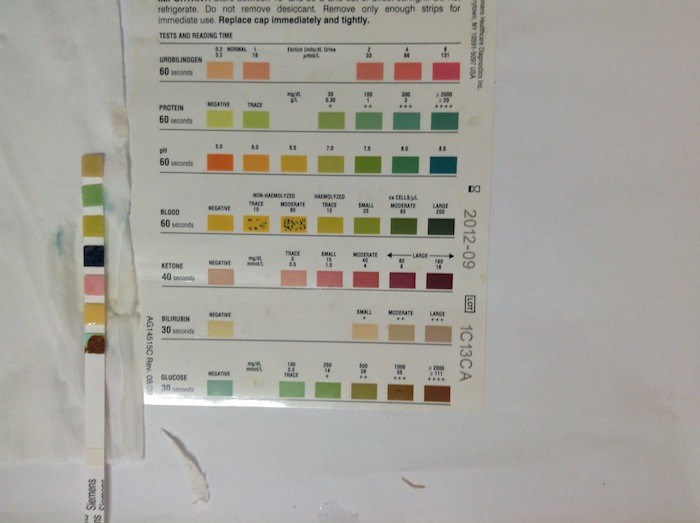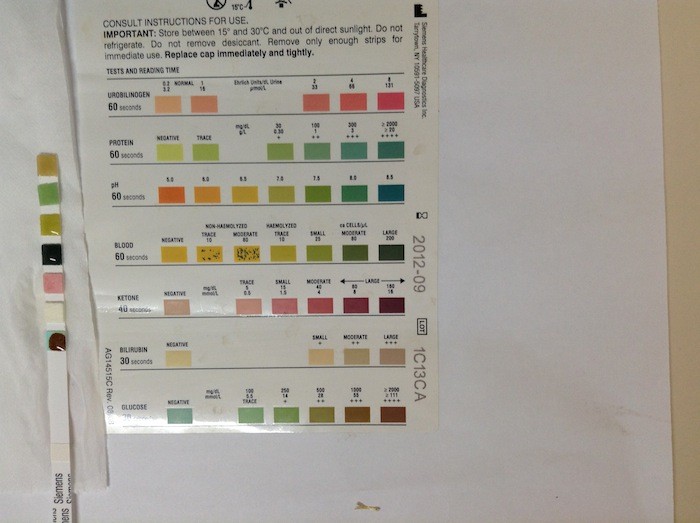The Benefits of Feline Urinalysis
There is a great deal to be learned from feline urinalysis. Everything from kidney disease to diabetes will show up. And cat pee is easy to collect if you have the right tools!
Cat urine collection is easy and should be a must
Throughout this site you will read about the advantages of collecting urine samples.
Collecting for feline urinalysis need not be difficult and I have many videos and explanations especially for cat vet professionals
And the payoff is huge!
Cat urine or blood: Which will tell you more?
Feline urine tests will tell you much more about a cat’s health status than a random (i.e. ‘wellness’) blood sample, and is the only way to detect a feline urinary tract infection.
Contrary to current popular belief, urine specific gravity is a more accurate assessment of renal function in the clinical setting, and when combined with a blood creatinine and total protein or albumin reading, gives a very clear picture of the kidneys’ health.
Cat urine is often over 1.050. It is normal till 1.035. Cats can survive years with a USG of 1.012 – 1.016. There is not yet an easy way to measure Glomerular Filtration Rate directly, though there are some tests on the horizon.
If you throw a Urinary Protein / Creatinine measure in, you have fairly well defined the urinary tract status.
Feline urine tests reveal diabetes

Given that the simple old dipstick also reveals diabetes status (glucose + / – ketones), pH – going up usually from hyperventilating on the way to the surgery, but will be acidic in conjunction with a low USG if the kidneys really are trying correct the metabolic acidosis of Chronic Renal Insufficiency (it’s not failure till there is no function!) and presence of blood, well there is not much more you need to know about a cat.
There will even be a trace or more of bilirubin to point you in the direction of liver / haemolysis issues if you have trouble visualising jaundice.
Please ignore the leucocyte pad on the dipsticks.
Blood in cat urine

If you find blood in the urine on the dipstick pad, you can can check the sediment microscopically, and even send the urine off for more advanced feline urine tests (culture and sensitivity -although I find if the USG is greater than 1.030 it is often unrewarding).
If the cat is 8 years and older, particularly females, then you can assume that it is more likely than not there is a urinary tract infection (often involving polyps).
Treat with antibiotics for a prolonged period. Clinically, I find a lot of blood in the urine disappears after a dose or two of Convenia. Very convenient if the owner can’t give pills consistently. Otherwise, Zenequin or Clavulox for 4 – 6 weeks (NOT just 10 days).
Some cats will never clear the blood – they either have a ureteral or renal pelvis stone (and good luck with those), or a chronic pyelonephritis that you are going to just have to plug away at.
Kidney disease in cats
Kidneys are a cat’s weak point – where we have heart attacks, their kidneys run out of reserve.
Having said that, with the palatable renal diets, and / or Ipakatine added to the food of fussy old cats (rather than make them eat a new food), a bit of a fiddle with some H2 blockers, we can keep these old cats going a really long time with really terrible kidney function. As long as you get there before the last few nephrons peg out.
I only have cats on drips once every year or two – because I know where there kidneys are up to by regularly cystocentesing. Long before the blood creatinine / BUN’s go up, I am helping these cats feel better by reducing their phosphate (closely associated – via PTH) which improves their appetite.
All clinical pictures rather than mmols of things, but Creatinine levels have not been shown to parallel quality of life.
Elderly cat vet care – take the blood
Vets: See Dr Kim’s handy hints for collecting blood and taking blood pressure
If you have an oldish cat (greater than 8 years) with classic elderly cat health problems – a high heart rate, weight loss + / – a palpable thyroid – then it is worth extracting blood for a T4 test.
Might as well check the lot!
If you are one of the brave, you can measure their blood pressure, and if it is high, treatment will preserve the function of those last few nephrons.
Ah, but a blood sample is easier? No.
Ah, but the technician or nurse can take a blood sample and not a urine sample?
It’s a fine point of difference. But I can conduct feline urine tests and give an answer in 3 minutes. Cats, in my hands, are strangely accepting of sampling.
And is the blood in urine real or artifactual? In my hands it is always significant. And after a few practices, so will it be in yours.
Go ahead; take the piss and improve your feline patients’ quality of life!
